Hello, I’m Dr. Candy Akers, a seasoned veterinarian with over a decade of experience in animal care. Throughout my career, I’ve encountered countless pet owners concerned about the health and well-being of their furry companions. One of the most common concerns I’ve come across is the appearance of warts on a dog’s head. Understandably, seeing an unfamiliar growth on your beloved pet can be alarming. However, I’m here to shed light on this topic and provide you with vet-approved, natural remedies to address these warts right at home. My aim is to equip you with knowledge, ensuring that you can make informed decisions about your dog’s health. Let’s delve into the world of canine warts and explore safe, natural ways to help your pet.
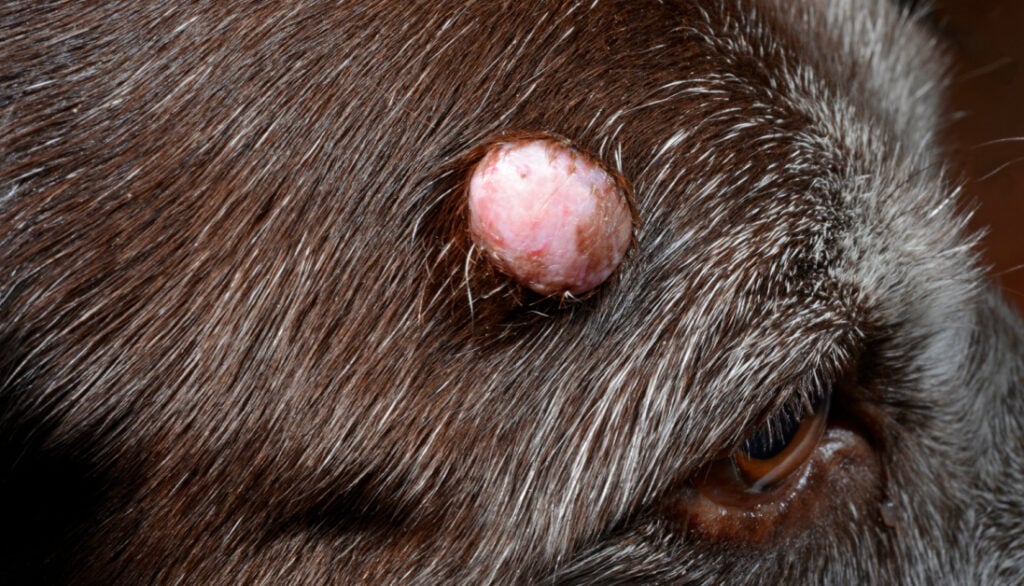
What is a Dog Wart?
A dog wart, scientifically known as a “canine papilloma,” is a benign growth that primarily appears on a dog’s skin. These warts are caused by the canine papillomavirus (CPV), similar in nature to the human papillomavirus (HPV) that causes warts in humans.
Characteristics of Dog Warts:
- Appearance: Dog warts are typically small, fleshy, and cauliflower-like in appearance. They can be singular or appear in clusters.
- Color: They are usually the same color as the dog’s skin but can sometimes be slightly darker or lighter.
- Texture: Most warts are rough to the touch, but some can be smooth.
Common Types of Warts in Dogs:
- Cutaneous Papillomas: These are the most common type and appear on the skin’s surface. They are often found on the head, face, ears, or limbs.
- Oral Papillomas: These warts appear inside the mouth, on the gums, tongue, or lips. They can sometimes make eating or drinking uncomfortable for the dog.
- Inverted Papillomas: These grow inward, often appearing in the nasal passages or on the pads of the feet.
Causes of Warts on a Dog’s Head:
The primary cause of warts in dogs is the canine papillomavirus. The virus is transmitted through direct contact with another infected dog or through contact with a contaminated object. Puppies and older dogs with weaker immune systems are more susceptible to the virus, but it can affect dogs of any age.
It’s essential to understand that while warts are generally harmless and non-cancerous, they can sometimes cause discomfort, especially if they are located in areas where they might be rubbed or scratched frequently. In the following sections, we’ll explore how to identify, treat, and prevent these growths to ensure your dog’s comfort and well-being.
Signs and Symptoms of Warts on Dogs
Recognizing the signs and symptoms of warts on dogs is crucial for early detection and appropriate treatment. While warts themselves are benign, understanding their appearance and behavior can help pet owners differentiate them from other skin conditions.
1. Physical Appearance:
- Shape: Warts typically have a rounded, cauliflower-like appearance.
- Size: They can range from tiny pinhead-sized growths to larger, more noticeable lumps.
- Color: Most warts match the dog’s skin color, but they can also be slightly darker or lighter.
2. Location:
- Warts can appear anywhere on a dog’s body but are commonly found on the head, face, ears, paws, and limbs. Oral papillomas, a type of wart, appear inside the mouth.
3. Number and Clustering:
- Some dogs may develop a single wart, while others might have multiple warts clustered together.
4. Texture and Consistency:
- Warts are generally firm and rough to the touch. However, some can be smooth or have a softer consistency.
5. Behavior and Discomfort:
- While warts are usually painless, they can become irritated if frequently rubbed or scratched. This can lead to redness, swelling, or even minor bleeding.
- Dogs might lick or scratch the wart, especially if it causes discomfort.
- Oral papillomas can make eating or drinking challenging if they grow too large or are located in a sensitive area.
6. Duration:
- Warts can last anywhere from a few weeks to several months. Over time, as the dog’s immune system responds, many warts will shrink and disappear on their own.
Differences from Other Skin Growths:
It’s essential to differentiate warts from other skin conditions, such as cysts, tumors, or skin tags. While warts have a characteristic appearance, if you’re ever in doubt about a growth on your dog’s skin, it’s always best to consult with a veterinarian. They can provide a definitive diagnosis and recommend appropriate treatment or intervention if needed.
In the upcoming sections, we’ll delve into natural remedies and preventive measures to address warts and ensure your dog’s overall well-being.
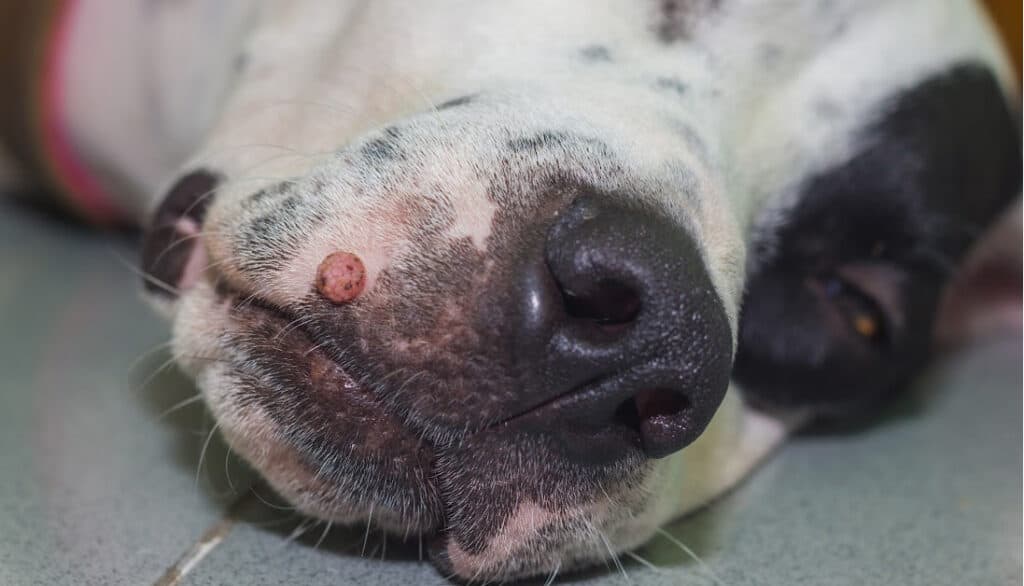
Natural Home Remedies for Dog Warts
While warts on dogs are generally harmless, many pet owners seek natural remedies to speed up the healing process and alleviate any discomfort. Here are some vet-approved natural treatments to consider:
1. Apple Cider Vinegar:
- How to Use: Soak a cotton ball in apple cider vinegar and apply it directly to the wart. Secure it with a bandage or medical tape. Repeat daily.
- Benefits: Apple cider vinegar‘s acidic nature can help dry out the wart and promote healing.
2. Castor Oil:
- How to Use: Apply a few drops of castor oil to the wart daily. It can help soften the wart and reduce irritation.
- Benefits: Castor oil has anti-inflammatory properties that can soothe the skin and reduce redness.
3. Thuja:
- How to Use: Thuja is a homeopathic remedy derived from the Thuja occidentalis tree. It’s available in pellet form. Administer the recommended dosage based on your dog’s size, or as directed by a holistic veterinarian.
- Benefits: Thuja is believed to have antiviral properties and is commonly recommended for treating warts in both humans and animals.
4. Vitamin E:
- How to Use: Break open a vitamin E capsule and apply the oil directly to the wart. Repeat daily.
- Benefits: Vitamin E can help moisturize the skin and promote healing.
5. Aloe Vera:
- How to Use: Apply pure aloe vera gel to the wart daily.
- Benefits: Aloe vera has soothing and healing properties that can help reduce irritation and inflammation.
Precautions When Using Natural Remedies:
- Always do a patch test to ensure your dog doesn’t have an allergic reaction to any remedy.
- Monitor the wart and surrounding skin for any signs of irritation or worsening.
- If the wart changes in appearance, bleeds excessively, or if your dog seems to be in pain, consult a veterinarian immediately.
- While natural remedies can be effective, they may not work for all dogs. It’s essential to be patient and consult with a veterinarian if you’re unsure about any treatment.
In the next sections, we’ll explore the benefits of treating dog warts naturally and delve into preventive measures to ensure your dog’s health and comfort.
Benefits of Treating Dog Warts Naturally
Opting for natural remedies when addressing warts on your dog offers several advantages. As a veterinarian, I’ve seen firsthand the positive outcomes of these treatments. Here are some of the primary benefits of treating dog warts naturally:
- Minimal Side Effects: Natural remedies typically have fewer side effects compared to chemical treatments or surgical interventions. This means a lower risk of allergic reactions, skin irritations, or other adverse reactions.
- Holistic Approach: Natural remedies often focus on boosting the dog’s overall health and immune system, rather than just targeting the wart itself. This holistic approach can lead to better long-term health outcomes for your pet.
- Avoidance of Chemicals: By choosing natural treatments, you’re avoiding potential chemicals and medications that might have unknown long-term effects or could be harmful in larger doses.
- Reduced Stress for Your Dog: Natural treatments can often be administered at home, eliminating the need for frequent vet visits, which can be stressful for some dogs. Additionally, avoiding surgical removal means no anesthesia, stitches, or post-surgical care.
- Strengthening the Immune System: Many natural remedies, like the Standard Process Canine Immune Support, aim to bolster the dog’s immune system. A strong immune system can help the dog naturally fight off the papillomavirus and prevent future warts.
- Empowerment for Pet Owners: Using natural remedies allows pet owners to take an active role in their dog’s health care. It provides a sense of empowerment and involvement in the healing process.
While the benefits of natural treatments are numerous, it’s essential always to approach them with caution. Ensure you’re using remedies that are safe for dogs, as some natural substances safe for humans can be toxic to pets.

Standard Process Immuplex for Treating and Preventing Dog Warts
In the realm of holistic veterinary medicine, we often look to whole-food supplements to support the body’s natural healing processes. One such supplement that has garnered attention for its potential benefits in treating and preventing dog warts is the Standard Process Immuplex.
1. What is Standard Process Immuplex?
Standard Process Immuplex is a whole-food supplement designed to support the body’s immune system. It blends essential nutrients from various sources, such as spleen, thymus, and liver extracts, along with vitamins and minerals, to provide comprehensive immune support.
2. How Can It Help with Puppy Warts?
- Immune System Boost: The primary cause of dog warts is the Canine Papilloma Virus (CPV). A robust immune system can combat this virus more effectively, reducing the appearance and duration of warts. Immuplex is designed to bolster the immune system, making it a potential ally in the fight against CPV.
- Nutrient-Rich Composition: The blend of vitamins, minerals, and glandular extracts in Immuplex provides a holistic approach to health, ensuring that the body has the necessary nutrients to function optimally.
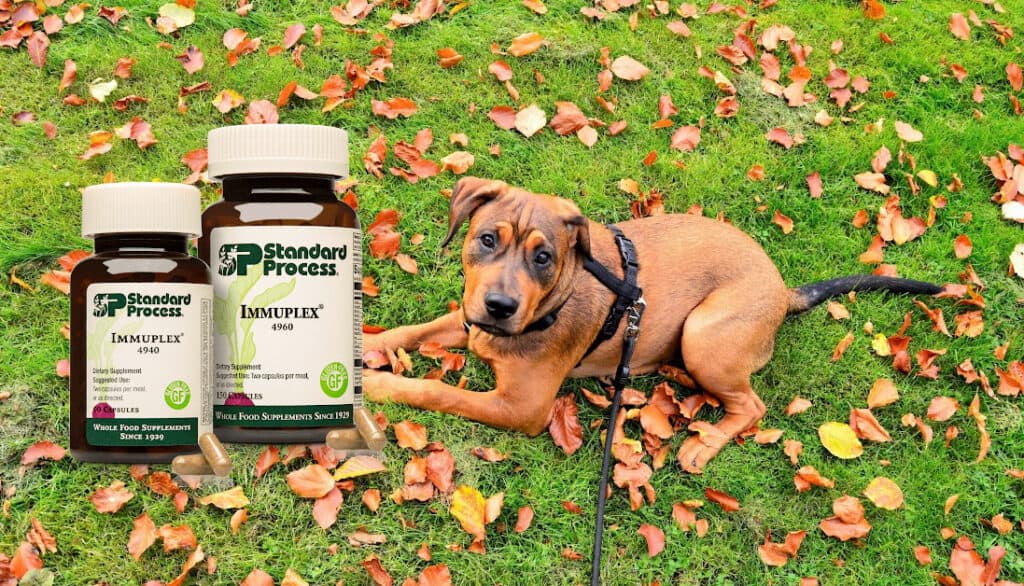
3. How to Use Standard Process Immuplex for Dog Warts?
- Dosage: The dosage will vary based on the puppy’s weight and overall health. It’s crucial to consult with a holistic veterinarian to determine the appropriate dosage for your dog.
- Duration: For preventive measures, a short course might be recommended. However, for treating existing warts or other immune-related issues, a longer course might be necessary.
- Administration: Immuplex usually comes in capsule form. The capsule can be opened, and the contents mixed with the dog’s food for easier administration.
4. Precautions and Considerations
- Consultation: Always consult with a holistic veterinarian before introducing any new supplement to your dog’s regimen.
- Monitor for Reactions: While adverse reactions are rare, it’s essential to observe your puppy for any changes in behavior, digestion, or overall health after starting the supplement.
- Quality Matters: Ensure that you’re purchasing the genuine Standard Process Immuplex from a reputable source to guarantee its quality and efficacy.
Standard Process Immuplex offers a natural approach to bolstering the immune system, making it a potential tool in treating and preventing dog warts. As with any supplement or treatment, individual
When to Consult a Veterinarian
While many warts on dogs are harmless and may even resolve on their own, there are instances when it’s crucial to seek professional advice. Here’s when you should consult a veterinarian:
- Uncertainty About the Growth: If you’re unsure whether the growth on your dog is a wart or something else, it’s always best to get a professional opinion. Other skin conditions or tumors can sometimes resemble warts.
- Rapid Growth or Change in Appearance: If the wart grows rapidly, changes color, bleeds, or appears ulcerated, it’s essential to have it checked. These could be signs of a more serious condition.
- Location Causes Discomfort: Warts located in areas like the mouth, eyes, or paws can cause significant discomfort. Oral warts can make eating or drinking painful, while warts on the paws can affect walking.
- Signs of Infection: If the area around the wart becomes red, swollen, emits a foul odor, or oozes pus, it might be infected. Infections require prompt treatment to prevent complications.
- Persistent Warts: If a wart doesn’t reduce in size or disappear after several months, it’s worth consulting a vet. They can advise on potential treatments or interventions.
- Dog’s Behavior Changes: If your dog becomes lethargic, loses appetite, or shows signs of pain or distress, it’s essential to seek veterinary care, even if these symptoms aren’t directly related to the wart.
- Recurrence of Warts: If your dog has had warts removed or treated and they return, a vet visit is in order to determine the cause and best course of action.
While many warts are benign and may not require medical intervention, always prioritize your dog’s well-being. When in doubt, it’s better to be safe and consult with a professional who can provide guidance and peace of mind.
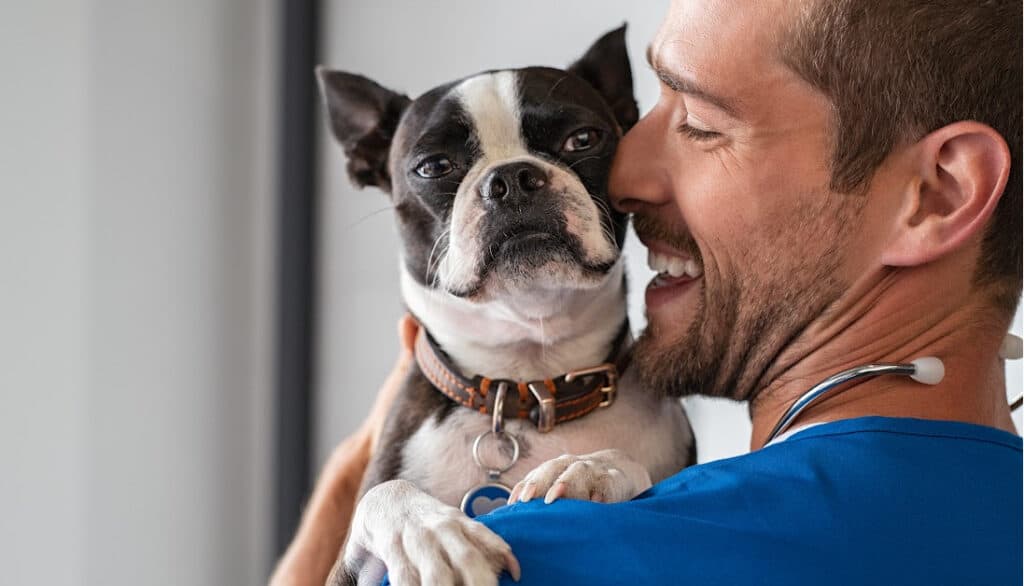
Steps to Prevent Future Warts on Dogs
Prevention is always better than cure. While warts on dogs are typically benign, taking steps to prevent their occurrence can save your dog from potential discomfort and you from worry. Here are some measures you can take to reduce the likelihood of future warts:
Boost the Immune System:
- Diet: Feed your dog a balanced, nutritious diet to ensure they receive all the essential vitamins and minerals.
- Supplements: Consider adding immune-boosting supplements, like Standard Process Canine Immune Support, to your dog’s diet.
- Regular Exercise: Ensure your dog gets regular exercise to keep them fit and their immune system robust.
Proper Grooming:
- Regularly check your dog’s skin during grooming sessions for any unusual growths or changes.
- Keep your dog clean, and ensure they are dried properly after baths to prevent any fungal or bacterial skin infections.
Avoid Direct Contact with Infected Dogs:
- If you know a dog has warts, it’s best to avoid direct contact until the warts have cleared. The papillomavirus can spread through direct contact.
Clean Environment:
- Regularly clean and disinfect your dog’s living environment, toys, bedding, and feeding bowls. The virus can survive on surfaces and spread to other dogs.
Avoid Stress:
- Chronic stress can weaken a dog’s immune system. Ensure your dog has a comfortable living environment, receives plenty of affection, and is not exposed to prolonged stressful situations.
Educate Yourself:
- Stay informed about canine health issues, including warts. The more you know, the better equipped you’ll be to prevent and address any health concerns.
While it’s impossible to guarantee that a dog will never develop warts, these preventive measures can significantly reduce the risk. By prioritizing your dog’s overall health and well-being, you’re taking steps to ensure they lead a happy, wart-free life.
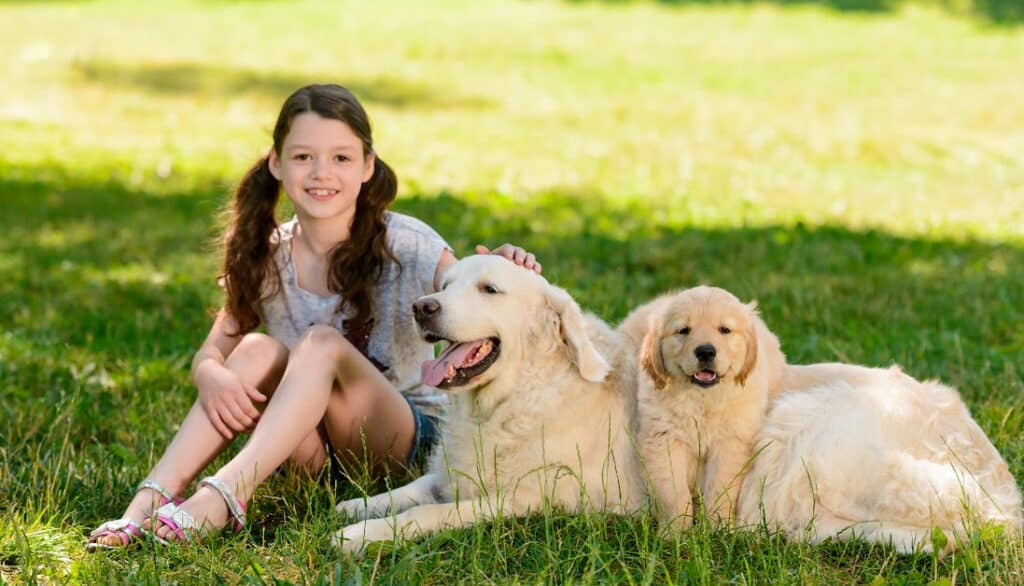
Conclusion
Warts on dogs, while often benign, can be a source of concern for many pet owners. Throughout this guide, we’ve delved into understanding these growths, from their causes and symptoms to natural remedies and preventive measures. The key takeaway is the importance of a holistic approach – prioritizing your dog’s overall health, from diet and exercise to regular check-ups, can make a significant difference in preventing and managing warts.
However, as with any health concern, it’s essential to strike a balance between at-home care and professional guidance. While natural remedies can offer effective solutions, always consult with a veterinarian when in doubt. Your dog’s comfort, well-being, and overall health should always be the top priority.
I hope this guide has provided you with valuable insights and tools to care for your furry companion. Remember, every dog is unique, and what works for one might not work for another. Stay informed, be observant, and here’s to a happy, healthy life for your beloved pet!
Frequently Asked Questions
Answer: Most dog warts will naturally disappear within 1 to 5 months as the dog’s immune system fights off the virus. However, the duration can vary based on the dog’s overall health and immune system strength.
Answer: Yes, the canine papillomavirus, which causes warts, can be transmitted to other dogs through direct contact. However, it’s species-specific, so cats and other pets are not at risk.
Answer: While many natural remedies are safe, there’s always a potential for allergic reactions or skin irritations. It’s essential to monitor your dog’s reaction and consult with a veterinarian before starting any treatment.
Answer: Dogs that have had warts might develop them again, especially if their immune system is compromised. However, with preventive measures and a strong immune system, the likelihood can be reduced.
Answer: While warts have a characteristic cauliflower-like appearance, other skin growths might look different. If you’re ever uncertain about a growth on your dog’s skin, it’s best to consult with a veterinarian for a definitive diagnosis.
